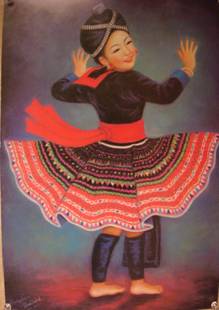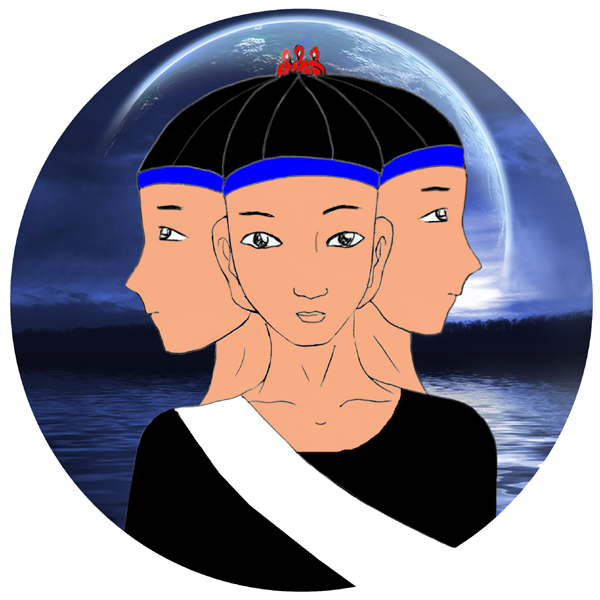Lao PDR "The war will end when the H'mong are gone"
The Hmong Indigenous People in the 1900s, 1960s, and 70s fought alongside with French and US forces in Indochina and when the Vietnam War spilled into Laos. After the war ended in 1975, the Lao PDR government regime allegedly targeted the Hmong because of their past political affiliation with the west. Today the Lao PDR systematically committed mass atrocities, war crimes, and genocides against the Hmong Indigenous People in central Laos with full support and back-up from its ally, Vietnam.
Zong Zoua Her quickly recognized that the Hmong situation will be ended similar to what happened in Cambodia. He stood up and save the Hmong from another “killing field” in other part of the country.
The Hmong Indigenous and the Lao PDR political difference continue to be of concerns in the Xaysombun Special Zone.
The Hmong Indigenous situation was brought to the Committee’s attention at the 69th and 80th Sessions of CERD, which noted the massacres of indigenous Hmong boys and girls who were searching for food in the Vangvieng region on August 16, 2006.
6 years have passed and these types of massacres and murders are still ongoing in the Xaysombun Administrative Zone territory in the Phou Bia Mountain area.
The Hmong Indigenous at the Phou Bia has drawn attention to continue attacks, including 11 separate incidents between 2009-2011 where the Lao PDR used unknown chemical agents in attacks on Hmong civilians Hmong children and elderly experience severe health consequences as a result of these unknown chemical poisons. Their symptoms include weakening of arms and legs, vomiting, swelling in the stomach, blindness, and prolonged diarrhea.
On February 5, 2012, further details from inside source regarding the situation on the ground stated, "The Lao PDR uses poisonous chemical sprays over the refuge areas to purposely destabilize the cultural and nature movement of the people and then follow-up with military attacks and assassination." He also stated that, "On February 5th, to February 12th, 2012, long range weapons; 60mm and 81mm were heavily shooting our refuge locations in the Phou Bia regions."
On the morning of February 15 from inside sources also confirmed the presence of Vietnamese Military battalions combined with 3 battalions from the Laos army stationed in Phou Kao Khoi, La Khean, Moung Cha, the Red River, Moung Ong, Nam Yin and Xieng Khoung. These areas are about 25 kilometers from the base of Mount Phou Bia. The goal is to wipe out the Hmong in the region completely by 2015. It confirmed of Mr. Kham Onh Chittamee, of the Regiment of Luang Phrabang issued a statement to his Department on 3 May 2005 NO. 131,
"we must unify strongly against our enemy as well as the government had made it out for 2005 to 2015 to eradicate all of the right-wing of the American Vang Pao whom have been residually camouflaging in the Lao jungles. They must be terminated prior to 2015-2020 from Laos. The CIA Hmong together with their offspring's forgotten by the Americans shall be wiped out immediately. Then, after 2020, no one of them will be alive nor the secret war fighting. Therefore, I command to the all of our parties in Luang Phrabang Provinces that we must conduct this order from now on."
The Lao and Vietnamese governments are continue to violate UN Convention of Mercenary and Paris Peace Accords of 1973, Agreement Ending the War and Restoring Peace in Vietnam, Chapter VII (7) regarding Cambodia and Laos Article 20.
The social and cultural rights of the Hmong people in these regions are constantly threatened if not blatantly violated. The human rights violations in the Xaysombun Special Zone continue to be of concern for the safety of the children and people there. The Lao constitution guarantees the right of ethnicity. The 49 ethnics that live in Laos as identified by the Lao government are peacefully but the Hmong Indigenous.
Since the Lao PDR took power in 1975 to this present moment, President Her estimated of 250,000 Hmong men, women, and children had died of, starvations, murders, landmines, and died from unknown of chemical agents. On 5/6/1985, three villagers of Hmong Indigenous was arrested and put them in a cave in Xathongxay Mount Pha Nque, the Lao and Viet military deployed 3 chemical warheads identified as 41mm and 51mm into the people in the cave, killing 3500 civilians.
Soldier of Fortune Magazines and Journal, April 1991, by Mr. Tom Peterson, (page 63) “Even Pathet Lao officials have admitted to the genocide; one of their common responses to the struggle is, “The war will end when the H’mong are gone.” Mr. Fred Caristo, who worked on the Hmong preservation struggle also stated, “This is a war of both genocide and attrition. The Lao draft the H’mong into the LPA, then put them in units where they know they’re going to get killed, then they take the lowest class of lowland Lao men and marry them off to H’mong women. The result? The H’mong race is bled into extinction.”
The Lao government continues denying of their crime committed against humanity. At both UPR and CERD hearings, the Lao government labeled "ills people and organization from outside trying to paint a bad image for the Lao government." They called on all evidences documented and of the some video surfaced into YOUTUBE.COM as "fabricating to distort the good image of the Lao PDR."
 |
 |
 |
 |
The Hmong Indigenous people have a unique culture, custom, diverse religious, and written language. It is easily distinguishing a man from a woman through their rich and colorful clothing that they wear. The colorful decorative art works are hand-made and representing their inner-self such as love, kindness, beauty, and most importantly, who they are as of their natives’ nationality. The clothes are original and they have kept those original designs for thousands of years of their origins.
Women clothes are colorful with different textures and designs, and from the way they wear. Women are always wearing two aprons, one in the front and one in the back with original color inner black and outer blue stripe. The shirt in the upper back has a small decorative apron. On the waist, there are either plain colors blue/light red sacks or light green/red sacks that wrapped around. The sacks are handmade with decorative art works on it or a plain red nylon one piece long sack is also an optional. On the neck are silver necklaces. On the handcuff sleeves color blue at end. Women are also wear the hate-dress with one inch sack that wrapped around the hate-dress in white and black stripe.
The men’s wears are also consisting of a pant, and a shirt. The colors on both are black. The shirts are designed shorter and ended at the belly level. Both sleeves are ended with the blue color on the cuff area as to the women. The men are also wear necklaces (optional) but the men’s necklaces are only one piece around the neck. Men are often carried the Bamboo Instruments called “Qeej”.
